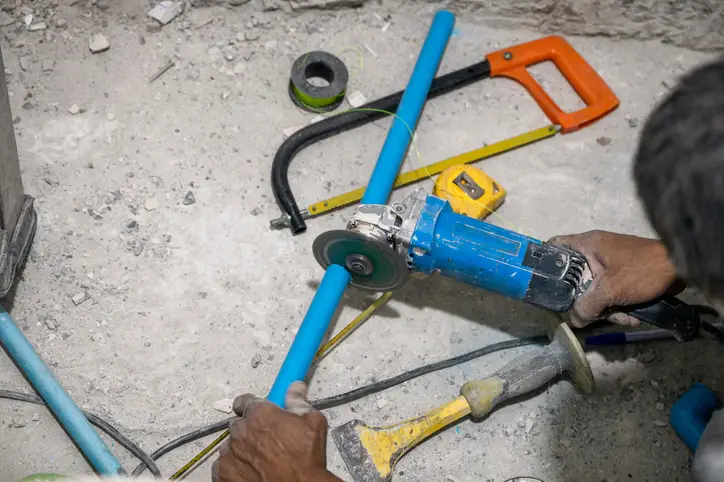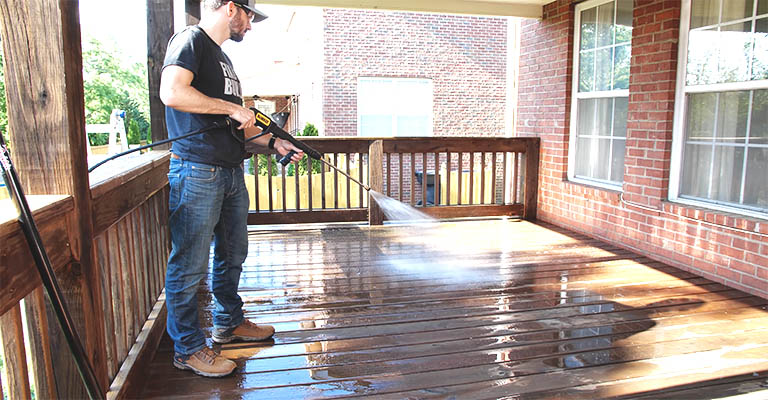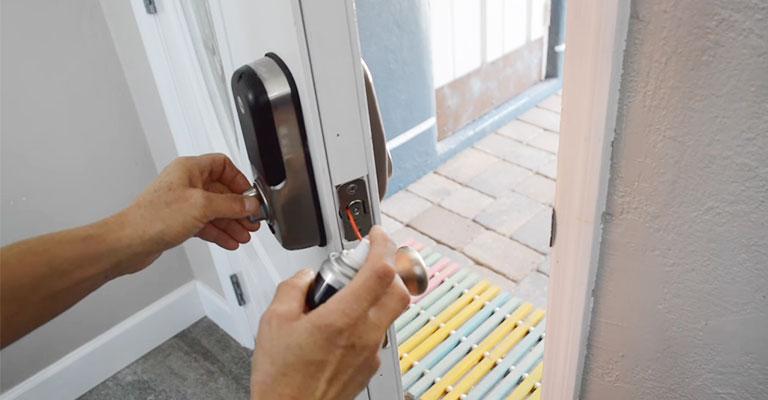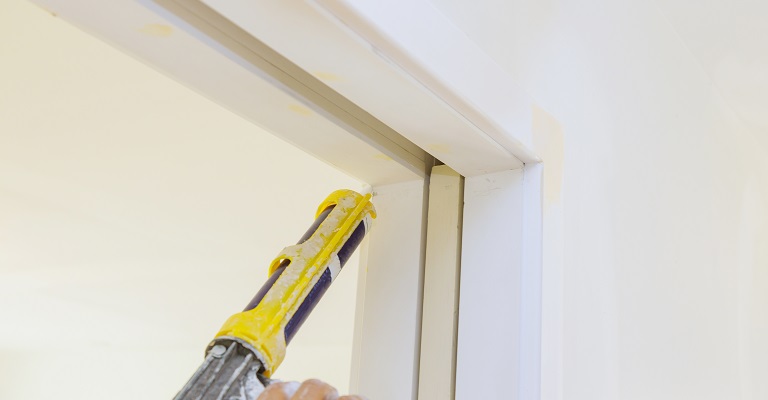Why Is My Bath Water Blue?
Blue or greenish water through our home pipelines is usually caused by copper. When the copper level exceeds our usual tolerance level, we can notice a slight change in the taste, odor, or color of the water.
However, excessive copper is quite harmful to our bodies. And that might lead us to diseases like kidney failure or cause liver damage. And keeping the pipeline clean is the best thing we can do to solve this issue.
Why Is My Bath Water Blue
Usually, we expect our water to be clear and colorless whether it is our drinking water or bathwater. Now we are always concerned about our drinking water, if it is clear or not, or if it has a bad odor, taste and or not. When we notice a slight change in color, odor, or taste in there, it worries us.
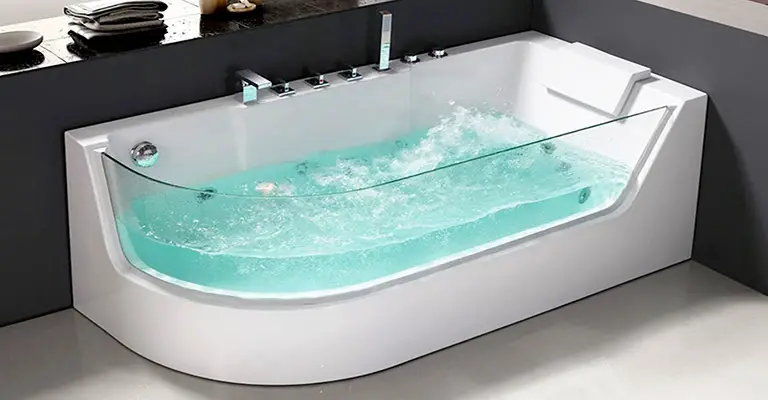
But that is not the same when it comes to our bathwater. We certainly care less about that. And sometimes it may cause serious trouble in our daily life. So, whenever we can feel the change in our bathwater, it would be best if take immediate action and see what is causing this incident.
When our water becomes a little green or blueish, it can be harmful to our bodies. Because this kind of water change is caused by excessive copper in our water. And if the human body absorbs too much copper, it can make you feel sick and cause nausea and Diarrhea.
How Copper Gets Into Water
Well, it is mostly caused by your faulty copper pipeline or more specifically, a corroded copper pipeline. As the pipes get corroded, the copper gets into your water and is transported to your home with a little blueish tint.
But why do copper pipelines corrode?
Corrosion is considered a major issue when it comes to metal pipeline works. That might be one of the reasons why the industry is moving towards the uPVC pipes. However, in general, copper pipelines last about 20 to 25 years. So after a certain age, the pipe starts to get damaged due to corrosion.
Usually, corrosion in the pipeline is a natural process and is mostly caused by wear and tear. But sometimes, the pipelines get corroded faster than they should. And there are some certain reasons. Such as:
pH
If the pH level of water is too acidic or too basic, the chances of corrosion increase. And after wearing and tearing, the pH level of water might be the biggest reason behind corroded pipes. If the water’s pH level is less than 6.5 or more than 8.5, it should concern you.
Other elements
If your water contains too much sand, sediments, or other elements like this, it may damage your copper pipelines and cause blue water.
High concentration of chemicals or organism
When the water contains an excessive amount of salt, dissolved oxygen, or bacteria, it tends to damage the pipeline through corrosion.
Water Velocity
If the velocity of water flow is higher than usual, it will cause wear in the pipeline due to water turbulence. Such incidents can be a key reason behind blueish water.
Temperature
According to research, the more temperature your water has got, the more corroded your pipes will be in less time.
How to Check for Copper Pipes
The best way to do this job is to go there and look at them. Try to go to the attic and see if your pipe works are visible or not. If your pipeline is of color red or brown, you have copper pipes. But if you do not have a copper pipeline and still have blueish or greenish water, it is time for you to call for an expert’s assistance.
How to Check for the Amount of Copper in Water
Usually, clean water has a significant amount of copper within our tolerance. But if the amount of copper exceeds the tolerance level, it would be harmful to us to use the water. However, the best and maybe the only way to check for the amount of copper in water is to test the water.
To test the water for copper, you can either buy a water testing kit and do it yourself, or you can spend some extra bucks and call for the professionals. The level of copper should not exceed 1.0 milligram per liter. Because if it does, it will go to our body via skin, ingestion, or inhalation.
And that can be a source of liver disease, kidney issues, vomiting, nausea, or diarrhea. However, according to World Health Organization (WHO), the level of copper should be between 2.0 milligram per liter.
The solution to Corroded Pipe
The best solution to this issue is to re-pipe your house. But that can be quite expensive. In that case, Re-piping only the corroded section of the pipeline would be economical.
But if you are not up to spending that much money on pipework, cleaning the pipes can work just as well. Cleaning the pipe can be helpful to keep the pipelines from getting permanent damage. It might take a few hours to clean the corroded parts of the pipeline. But make sure to check for all the corroded parts and clean them.
How Can I Clean My Pipes?
Cleaning your pipes will not be very fruitful if the damages on your copper pipes are too deep. But yet, people consider cleaning the pipe if minerals or such elements build up. To clean the pipes, follow these simple steps mentioned down below:
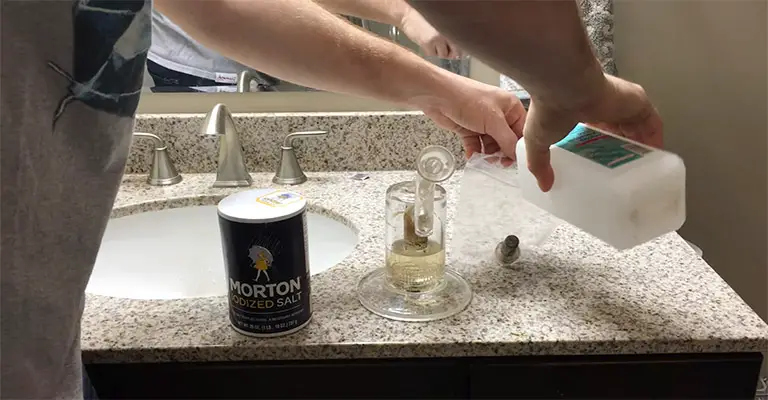
- Make sure there is no freestanding water in your pipeline while you are cleaning.
- Now use 1 gallon of distilled white vinegar and pour it down the drain.
- After that wait for 30 minutes while the vinegar loosens up the minerals and calcium.
- Finally use a long handheld, plastic scrub brush to scrub the corrosion out of the pipeline.
This task may take a couple of hours to complete, but doing this once every six months can keep you safe and carefree.
Frequently Asked Questions
Is it safe to bathe in copper water?
The worst thing about elements like copper in your water is, they can harm you all the way possible. From drinking to bathing, copper in water can be quite dangerous. As copper can get to your body through your skin, it is not safe to bathe in copper water.
What causes green water in the bathtub?
Green or blueish water is usually caused by copper. And the copper gets dissolved in your water through corroded copper pipelines. If your pipeline is made of copper and of around 20 years old, there is a high risk of corrosion which can cause unhealthy water with a green or blueish tint.
Does boiling water remove copper?
Using hot boiling water to eliminate copper is a well-known myth. Hot water cannot remove copper from your pipeline as it is caused by corrosion. To clean the corrosion there are many prominent ways like vinegar, scrubbing, re-piping. And boiling water is not one of them. Also, hot boiling water can cause more damage to the pipelines.
Conclusion
Like yellow spots on bathroom celling, blue bath water is not uncommon issue. As elements like copper in water is harmful to the human body in every way possible, we should ensure the water’s safety for both drinking and other household chores. Also, there are other elements in water like lead which is color and odorless and are quite harmful as well.
The mysterious blue tint in your bath water, often manifesting as a bluish tint, can usually be attributed to copper plumbing or copper piping within your home. This occurs when copper dissolves into the water, sometimes imparting a metallic taste and a distinct blue hue. Although the sight of blue water in your drinking glass or bathtub can be alarming, it is essential to understand the underlying causes related to water supply and water quality. Regular checks and maintenance of household plumbing are vital to prevent any potential adverse health effects and ensure the blue color does not signify a more serious issue.

